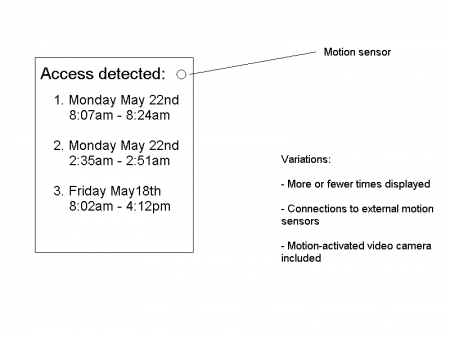What you need
In order to use this system you will need two computers (which could include phones or other devices) with the same chess-playing software installed on them. The software must always suggest at least two moves for any given board position, and it must always produce the same suggestions based on a particular board arrangement.
For instance, in a game that opens with white moving the king’s pawn two spaces forward (e4 in algebraic notation), the software must always recommend the same set of countermoves. It might recommend the Sicilian Defence (c5) as the highest ranking move, followed by an open game as the top alternative (e5). By choosing c5, the correspondent would indicate a ‘0’ and by choosing e5 they would indicate a ‘1’. It is essential that both players have software that suggests the same moves based on a given board position. It is this determined character that allows the communication system to work.
Sending a message
In order to send a message, it must first be converted into binary code. A simple way of doing this is to start with ASCII text and use an ASCII to binary converter. For example, we might wish to send the message “Your telephone has been tapped”. Converted into binary, this encodes as:
“010110010110111101110101011100100010000001110100011001010110110001100101011100000110100001101111011011100110010100100000011010000110000101110011001000000110001001100101011001010110111000100000011101000110000101110000011100000110010101100100”.
In order to send the message, it is simply necessary to look at the two top moves suggested by the chess-playing software. In the event that you want to transmit a ‘0’ then you should select the topmost move. In the event that you wish to transmit a ‘1’ use the second topmost move. Because the person who you are talking to will also be running the software, it will be immediately obvious to them which digit you intend to transmit. Because both of the top moves are likely to be reasonable chess moves, the game will look fairly ordinary to anyone intercepting the communication.
One option is to have each correspondent make moves in alternating fashion. In that way, each can send a message to the other simultaneously. Alternatively, one person can send a message while the other simply provides countermoves to maintain the impression of a game being played. Alternatively, a single player can transmit moves for both white and black. They could use each to encode a different message, or they could use both together for a single stream.
In order to send a long message, it would take quite a few chess games. There would also need to be a system in place for when there is only one legal move possible, or none at all. I suggest that whenever a situation arises where fewer than two legal moves exist, the ongoing game be abandoned by the resignation of one player and a new one be started.
Automation
The whole thing could be set up to run automatically – for instance, on cellular phones. You could put the text to be transmitted into an app and it could automatically query a database of chess moves. It could then transmit the appropriate move to a chess server which the other correspondent would be connected to. The rate of transmission could be automatically limited in order to maintain the illusion of a game of chess being played, or it could be allowed to run at a high speed in order to send messages quickly. In either case, the data being transmitted would consist of valid chess moves and the game being played would look fairly normal.
Super-encipherment
Naturally, it would also be possible to use an encryption algorithm to turn a plaintext message into a binary string. This could either be a symmetric key cipher with a key that the correspondents have agreed to beforehand, a public key system based on public and secret keys, or an online key exchange system like Diffie–Hellman. This would provide some protection against an attacker who realizes the chess games are being used to transmit a message.
Alternative mechanism
As an alternative to chess-playing software, each player could also look at one of the chess game analyzing websites that ranks moves by popularity. The most popular move could code for a ‘0’ while the second most popular move could code for a ‘1’. Over time, the popularity of moves in the database may change. This shouldn’t be a problem for communication happening in real time, and could be useful insofar as it would make it difficult for anyone trying to decipher the message later to do so.
Obviously, this system could be used for games other than chess. All that is necessary is that both players have access to the same ranking of moves, so that each move can be translated reliably into the appropriate binary digit and from there into plain text. In games where a fairly large number of moves are always possible, the system could be extended beyond binary and longer messages could be concealed in fewer games. For instance, if there were always ten possible ranked moves, each option could be used to convey a decimal digit between ‘0’ and ‘9’.

